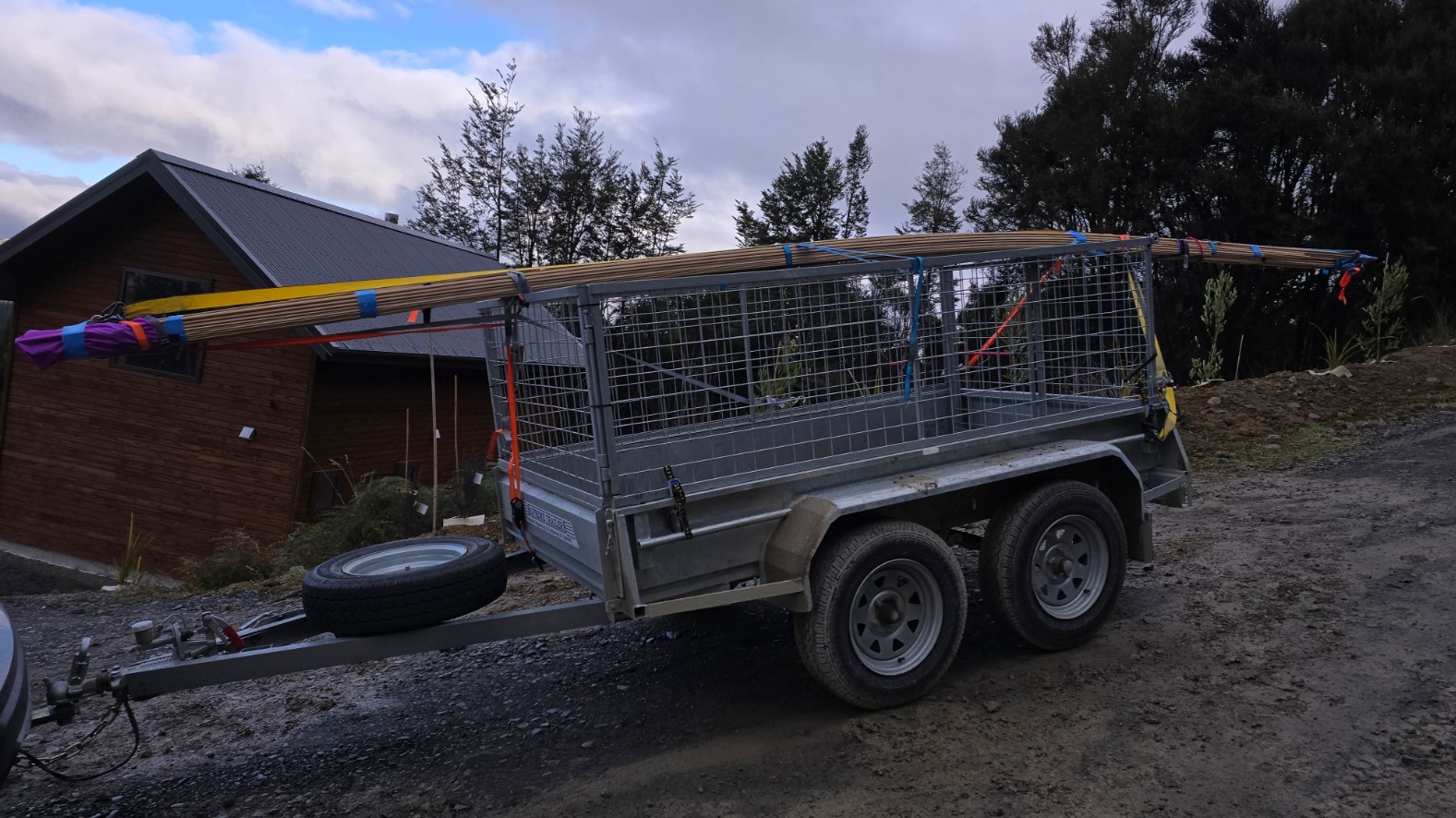Understanding electrical wiring standards is crucial for the safety and functionality of any home. This is particularly true in New Zealand, where specific codes and regulations are designed to ensure that electrical systems are installed correctly and operate safely. Electrical wiring standards serve as a guideline for homeowners and professionals alike, detailing how to properly set up, maintain, and inspect electrical installations.
For New Zealand homes, adhering to these standards is not just a matter of compliance; it's about protecting lives and property from the potential dangers associated with electricity. In this article, you'll gain insight into the essential aspects of New Zealand's electrical wiring standards. You will learn about:
- Key regulations that govern the electrical wiring in residential buildings
- Common methods used for wiring New Zealand homes
- The advantages of ensuring your home's electrical system meets the established standards
Whether you're a homeowner curious about the electrical system in your residence or a professional looking to stay updated on best practices, this overview will equip you with the knowledge you need for safe and reliable electrical installations.
Electrical Wiring Standards in New Zealand
Electrical codes and regulations serve as crucial benchmarks for the safety and functionality of electrical systems within homes. These guidelines form a protective barrier against potential hazards, ensuring that all electrical installations meet the necessary criteria to prevent accidents.
Why Electrical Codes and Regulations Matter
- Safety First: Electrical codes and regulations are meticulously designed to safeguard occupants from risks such as electric shocks, fires, and other related dangers that can arise from faulty electrical work.
- Smooth Operations: These standards ensure that all components, from wiring to appliances, interact seamlessly to provide a secure and efficient flow of electricity.
- Industry Accountability: Compliance with these codes is not optional but mandatory for every professional involved in the industry. This adherence signals a commitment to quality, reduces liability issues, and fosters trust with clients who depend on their expertise for safe living environments.
Specific safety requirements within these codes provide clear instructions on how to handle various aspects of electrical work:
- Grounding Techniques: Grounding is an essential part of any electrical system. It provides a path for electric current to follow in case of a short circuit, thereby reducing the risk of fire or electrocution. The New Zealand standards specify how grounding should be established and maintained to ensure maximum safety.
- Insulation Guidelines: Proper insulation of wires is vital in preventing short circuits and protecting against electric shock. The regulations detail the types of insulation materials that should be used and how they need to be installed to ensure they perform effectively over time.
These examples are just two facets of a wide array of stipulated procedures aimed at fortifying homes against electrical mishaps.
Key Organisations and Standards
New Zealand is serious about electrical safety. The country has strict electrical codes and regulations in place to ensure that all electrical installations meet high safety standards. Two key organisations play a crucial role in upholding these standards:
1. Energy Safety New Zealand: Upholding Safety Standards
Energy Safety New Zealand, a division of WorkSafe New Zealand, is responsible for overseeing electrical and gas safety issues. They carry out important functions such as:
- Developing and reviewing regulations and standards for safe electrical practices.
- Monitoring compliance with electrical codes to prevent accidents and promote public safety.
- Providing guidance and information to industry professionals and the public.
2. AS/NZS 3000:2018 Electrical Installations (Wiring Rules)
AS/NZS 3000:2018 Electrical Installations, also known as the Wiring Rules, is a comprehensive standard that sets out the technical requirements for designing, building, and checking electrical installations in New Zealand homes. This standard covers everything from installation methods to testing procedures.
Electricians and contractors must strictly follow the Wiring Rules when carrying out any wiring work. Some key aspects covered by these rules include:
- Safety guidelines: Ensuring protection against electric shock, fire hazards, and other risks through proper installation methods and protective devices.
- Installation requirements: Specifying criteria for selecting appropriate cables, wiring systems, earthing arrangements, switchgear, control gear, and other components.
- Testing procedures: Outlining mandatory tests that must be conducted before installations are put into service to verify their safety and compliance with regulations.
It's crucial for professionals in the industry to stay updated with any revisions or amendments to AS/NZS 3000:2018. These updates may be made to incorporate new technologies, changes in industry practices, or improved safety measures based on research or incident analysis.
Adhering to these standards is not just about following the law; it's about prioritizing quality workmanship that ensures the well-being of occupants. Energy Safety New Zealand plays a vital role in establishing and regularly reviewing these standards to keep up with the changing needs of the industry.
By understanding the roles of key organisations like Energy Safety New Zealand and following standards such as AS/NZS 3000:2018, professionals contribute significantly towards creating safer homes. Compliance with these codes reflects a deep commitment to both personal safety and property integrity – values that are essential for responsible trade practice in New Zealand's residential sector.
Understanding Electrical Wiring in New Zealand Homes
Residential Electrical Systems
When you plug in an appliance or switch on a light in your home, you're drawing power from the mains electricity supply. This is the lifeline that connects your residence to the larger utility grid, delivering the electricity needed to run your household. The process begins at a connection point often located on the street or boundary of your property, where electricity from the grid enters your home's electrical system.
Mains Power Supply
The mains power supply is responsible for providing a steady and reliable flow of electricity into your home. Electricity typically comes from power plants and is distributed through a network of substations and transformers, stepping down voltage to a level suitable for residential use. The final leg of this journey is from the street-level transformer to your home's electrical meter and then through to the switchboard.
Switchboards
Think of switchboards as the central hub or command Centre for all electrical circuits in your home. They are designed to distribute electricity from the mains supply to different areas and appliances within your premises. Not only do they manage power distribution, but switchboards also play a critical role in ensuring safety:
- Circuit Breakers: These act as guardians against electrical overloads by automatically cutting off power when they detect excess current that could potentially cause damage or start a fire.
- Residual Current Devices (RCDs): These are installed for additional protection against electric shock; they trip the circuit if they sense an imbalance in the electrical current, which can occur during a fault.
By housing these devices, switchboards contribute significantly to preventing electrical accidents and ensuring that if something goes wrong, the problem can be isolated without affecting the entire house's power supply.
Electricity is channeled through circuits that start and end at the switchboard. Each circuit is usually dedicated to specific areas or types of appliances—some may serve lighting fixtures while others are reserved for power outlets. The structured layout ensures that any maintenance or repair work can be carried out safely and efficiently.
Wiring Methods in Homes
Wiring methods in homes vary but must meet stringent standards to ensure safety and functionality. In New Zealand homes, wiring systems are typically protected by insulation and are routed through spaces in walls, ceilings, or under floors—away from direct contact with residents and environmental factors that could degrade their performance.
The infrastructure laid out in residential properties not only has to meet current demands but also anticipate future needs. This foresight includes provisions for extra capacity to accommodate additional appliances or renovations without necessitating major rewiring work.
Understanding how residential electrical systems operate gives homeowners insight into what happens when they use their electrical fixtures and helps them appreciate the complexity behind what seems like simple daily actions—like turning on a kettle or charging a phone. It underscores why compliance with wiring standards isn't just about following rules; it's about ensuring every flick of a switch delivers safe, reliable power.
Types of Wiring Methods
When it comes to residential electrical systems, the choice of wiring methods plays a pivotal role in both the functionality and aesthetics of a home. You have two primary options: surface wiring and concealed wiring. Understanding the components and techniques of these systems is crucial for proper installations and effective troubleshooting.
Surface Wiring:
- Visibility: In surface wiring, electrical cables are mounted on the wall surface, often within protective casing or conduits.
- Accessibility: This method allows for easy access to wires for maintenance or future modifications.
- Cost-Effectiveness: Surface wiring can be more cost-effective as it requires less labor and alteration to existing structures.
- Typical Applications: It's commonly used in workshops, garages, or when adding circuits to a finished home where cutting into walls is impractical.
Concealed Wiring:
- Aesthetics: Concealed wiring is hidden behind walls or ceilings, offering a cleaner look without visible cables or conduits.
- Safety: Being protected by walls, concealed wires are less prone to accidental damage.
- Property Value: Homes with concealed wiring often have higher appeal due to their uncluttered appearance.
- Typical Applications: Most new homes and major renovations in New Zealand utilise concealed wiring to maintain aesthetic integrity.
Each method serves specific purposes and is chosen based on application needs, budget considerations, and homeowner preferences. While surface wiring might stand out as an economical choice for certain settings, concealed wiring remains the go-to for its seamless integration into a home’s design. Both methods require adherence to the mains power supply specifications, correct installation of switchboards, and effective placement of circuit breakers to ensure safe operation within residential electrical systems.
By selecting the appropriate wiring technique, you contribute not only to the visual appeal but also to the long-term safety and reliability of your home's electrical infrastructure.
Common Electrical Components in Homes
When it comes to residential electrical systems, it's important to know about the different parts that make sure power is distributed and used efficiently in New Zealand homes. Knowing these components well not only helps with proper installations but also makes it easier to troubleshoot any problems that may come up.
Power Outlets
New Zealand homes usually have a variety of power outlets to meet different requirements:
- Standard Power Outlets: These are found everywhere in homes and are made for the usual two or three-pronged plugs that household appliances use.
- USB Outlets: As digital devices have become more common, so have USB outlets. They let you charge phones, tablets, and other USB-powered gadgets directly without needing an adapter.
- Specialised Outlets: Some appliances need more power or have specific voltage or current needs. For them, specialised outlets are installed. Examples include outlets for ovens and air conditioning units.
Light Switches
The way lighting works in a home depends a lot on the types of light switches that are installed:
- Toggle Switches: These are the basic on/off switches that you flick up or down to control lights.
- Dimmer Switches: With dimmer switches, you can change the brightness of lights. They're great for creating just the right mood for different situations. But remember, dimmer switches work only with certain types of light bulbs, so it's important to choose compatible ones.
- Smart Switches: A newer option, smart switches can be controlled using smartphone apps or home automation systems. They offer convenience and help save energy by allowing you to manage your lights from anywhere.
Light Fixtures
Light fixtures do more than just provide light — they also add to the overall look of a space. Here are some popular choices:
- Pendant Lights: These hang from the ceiling and give focused lighting over specific areas like kitchen islands or dining tables.
- Recessed Downlights: Installed flush with the ceiling, downlights have a clean appearance and can spread light evenly throughout a room.
- Wall Sconces: Sconces are mounted on walls and can bring style to a space while providing secondary lighting.
Each part has its own role in making sure residential electrical systems work well and look good too. Whether it's powering important appliances or lighting up rooms in a thoughtful way, knowing about these electrical fixtures makes New Zealand homes more functional and comfortable.
Benefits of Complying with Electrical Wiring Standards
Adhering to electrical wiring standards is crucial for the safety and functionality of any home. In New Zealand, compliance with these standards brings about significant safety benefits:
Safety Benefits
- Prevention of Electrical Fires: Properly installed and maintained electrical wiring greatly reduces the chances of electrical fires. Faulty wiring is a leading cause of house fires, and adherence to wiring codes ensures that risks are mitigated.
- Avoidance of Electric Shocks: By following the correct installation procedures and using the appropriate materials, electric shocks can be prevented. This includes ensuring that all components are grounded and that insulation is applied where necessary.
Reliability
- Consistent Power Supply: Reliable electrical installations are less likely to cause power outages or surges that can disrupt daily activities and damage sensitive electronics.
- Optimal Performance of Appliances: When your home's electrical system complies with the latest standards, you ensure that appliances receive the correct voltage and current, which is essential for their proper functioning and longevity.
Compliance Inspections
- Quality Assurance: Compliance inspections are conducted by qualified professionals who verify that all electrical work meets the stringent requirements set out in the regulations.
- Inspectors check for proper grounding
- Verify that wiring methods are appropriate for the conditions
- Ensure that all fittings and fixtures are rated for their intended use
- Consistency Across Installations: These inspections help maintain a level of consistency across different properties, ensuring that any electric work done in your home is up to par with industry best practices.
By maintaining compliance with electrical wiring standards, homeowners not only enhance their personal safety but also contribute to a higher standard of living in their community. Quality electrical work underpins a modern lifestyle, providing peace of mind knowing that your home's electrical system is both safe and dependable. When it comes to electrical safety in homes, it's crucial to prioritise knowledge and adherence to wiring standards. Whether you're starting a wiring project or facing issues with your home's electrical system, always remember to consult a qualified electrician. These professionals have the necessary expertise and stay updated on the latest Understanding electrical wiring standards that are essential for maintaining safety in New Zealand homes.
By understanding and following these regulations, you're actively contributing to a safer living environment for yourself and your family. It's important to recognise that electricity is a powerful tool which requires both respect and understanding. By equipping yourself with these qualities, you can significantly reduce the risks associated with electrical systems.
Ultimately, by embracing the peace of mind that comes from Ensuring electrical safety in homes through compliance with established wiring standards, you're taking a crucial step towards preventing electrical accidents and creating a safe home for future generations.
Keywords for Internal Search:
new zealand electrical standards, home wiring regulations nz, electrical safety nz, as/nzs 3000:2018 compliance, grounding techniques, insulation guidelines nz, electrical codes nz, energy safety new zealand, wiring rules nz, electrical system installation, residential electrical safety, electrical inspections nz, switchboard installation, circuit breakers nz, rcds in nz homes, mains power supply nz, concealed wiring homes, surface wiring benefits, electrical system maintenance, safe electrical practices nz, preventing electrical fires, avoiding electric shocks, reliable power supply, optimal appliance performance, electrical installation checks




-1704401741.png)
